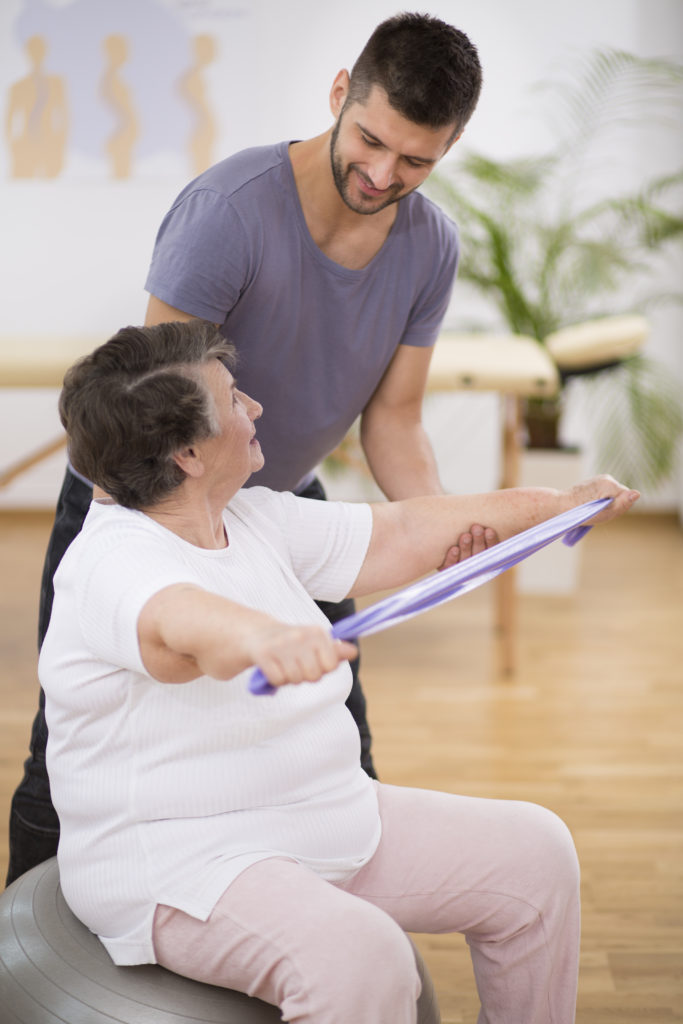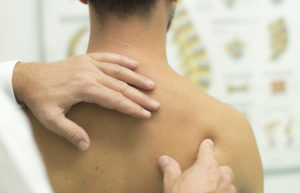A very common source of shoulder pain, rotator cuff tears can happen over time or result from accidents or sports injuries. The kind of treatment necessary and recovery timeline depend on the extent of the damage inflicted and the severity of the symptoms.
While every injury differs from patient to patient, it’s important to entrust in the recovery process and allow your joints the time they need to heal and begin functioning again. Shoulders are complex, and each crucial aspect of the joint needs to work in unison to achieve a full range of motion.
Rotator cuff surgery repair

After undergoing rotator cuff arthroscopic surgery, physical therapy will be necessary to restore strength and regain control of motion. Rotator cuff healing is separated into phases. Each stage of the process accounts for your limitations and level of strength.
- Passive Motion: This initial phase could last up to six weeks and focuses on movement without contracting the rotator cuff muscles. Your physical therapist will move your arm in a variety of positions to improve your range of motion.
- Active Motion: When there is enough healing in the tendons, active motion helps to improve your arm control without resistance. This is the first stage where you’ll practice exercising without support from your physical therapist.
- Strengthening: This focuses on strengthening your rotator cuff muscles using light resistance, as they have become weak without use. You’ll learn safe techniques to re-engage specific muscles.
- Recovery: Reaching the final stage of healing is entirely dependent on the patient’s dedication to the protocol and the size of the tear.
How long does it take to recover from rotator cuff surgery?

Complete recovery from rotator cuff arthroscopic surgery is usually attainable within four to six months. If there is not a significant improvement in shoulder strength or pain relief within this timeframe, it’s likely a result of poor patient compliance with rehabilitation. Outside factors for delayed improvement are the patient’s age, usually 65 or older, or patient use of tobacco and other nicotine products.
Do and don’ts after rotator cuff surgery?
To achieve full recovery from rotator cuff surgery, it’s all about following the doctor’s orders. Both your orthopedic surgeon and physical therapist will recommend you adhere to the following:
Follow the post-op instructions
After rotator cuff arthroscopic surgery, your surgeon will provide you with a set of guidelines to follow when you get home. You might be groggy after the procedure, so you’ll want to get a lot of rest. It’s ok to stay in bed for your first day of recovery, but don’t make a habit of it afterward. Make sure to wear the sling while asleep. If you experience any pain, take any prescribed medication as directed by your surgeon and ice the area throughout the day. While showering during the first couple of days after surgery, make sure to cover the dressing. Take good care of the incision area by keeping it clean and dry.
Commit to physical therapy and recovery process
After your first post-op visit, you’ll have a better idea of when to begin physical therapy and resume other normal activities like working at a desk or driving. When you start physical therapy, pay attention to the recommended movements, ask questions and follow the exercise program provided to you. Rehabilitation cannot be sped up, and patience is vital to your progress.
If you want to have a full recovery after six months, do NOT do the following:
Push your luck
Don’t overestimate your stage of healing. You may feel like you can lift something or raise your arm, but your physicians know better. We understand that keeping your arm in a sling is inconvenient, but you shouldn’t remove your sling until you’re given approval from your surgeon.
Skip physical therapy appointments
You should always be working alongside your physical therapist during rehabilitation. You could hinder your progress by attempting new exercises on your own or not sharing any changes you’re experiencing with your physical therapist.
How do you sleep with a sling after shoulder surgery?
While you’re in a sling, you need to ensure that you are in an upright, semi-reclined position and supporting your surgery arm to promote blood flow. Within the first four to six weeks, place pillows accordingly to avoid rolling onto your surgery arm. Reference these tips to sleep more comfortably after shoulder surgery.
Rotator cuff surgery recovery is a long process, but when paired with the right orthopedic surgeon and supporting physicians, you can yield positive results and get back to your lifestyle within a reasonable timeframe.
Dr. Van Thiel of OrthoIllinois creates a personalized care plan for each of his patients and prioritizes getting them back to their active lives. As an active person himself, his efforts are aligned with the most efficient recovery process and tailored to meet the unique needs of his patients.
Call Dr. Van Thiel at and schedule an evaluation today at our Rockford office.





